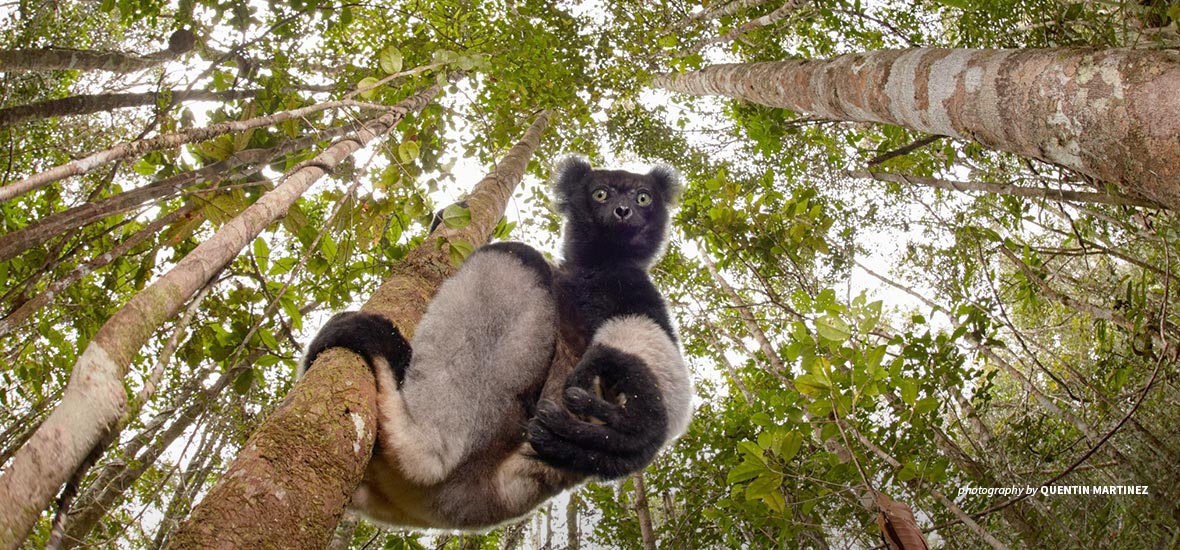Engaging communities to save Africa’s wondrous variety of life

The Mauritian flying fox is an endangered fruit bat species
This article is developed and written by the second cohort of the Charles R. Wall Young African Policy Fellows Program and the inaugural Conservation Leadership and Management Fellowship. Both programs aim to build the leadership, negotiation, and communication skills of young African professionals in the conservation sector.
Can you imagine a situation where the only wild animals you see are those kept in zoos? This might seem impossible, but it may come to pass given the increasing rate of human activities on biodiversity loss.
Africa is young, diverse, and abundant in natural heritage. Despite its rich potential, the continent’s biodiversity faces significant challenges. However, local African heroes are working on the ground to reverse biodiversity and habitat loss, collaborating with communities to save the continent’s wondrous variety of life. This article will examine some of the most pressing issues affecting biodiversity today and how people join forces across Africa through nature-based solutions.
In Mauritius, NGOs and scientists, via Associate Professor of Ecology at the University of Mauritius Dr. Vincent Florens, are addressing tensions between lychee growers and the most threatened bat species — the Mauritian flying fox (Pteropus niger). The island lost 98 percent of its native terrestrial vegetation, and the remaining is facing biodiversity challenges such as alien species invasion. One of the survivors of extinction is the Mauritian flying fox, a fruit bat with an essential ecological keystone role of pollination and dissemination of seeds that contributes to the long-term maintenance of the bulk native flora. However, flying foxes have also been blamed for reduced fruit harvests and profits for mango and lychee growers.
Conservation challenges worsened in 2015, 2016, and 2018, when the government authorized mass culling the flying fox. Following those culls, fruit production did not increase, and the species population declined. The species has since been upgraded to ‘Endangered’ on the International Union for Conservation of Nature (IUCN) Red List of Threatened Species. Stakeholders, such as Ecosystem Restoration Alliance, succeed by installing nets to prevent crop loss. However, Mauritius can go further with more initiatives such as subsidies or green-labeling fruits that are flying fox-friendly while engaging the local community.
Innovative solutions to address biodiversity overexploitation
Lemurs are the national pride of Madagascar, but they are critically threatened, according to the IUCN Red List of Threatened Species. Before 2010, localities around the Beanka Protected Area used to consume lemur meat. “In April, lemurs were trapped and released to locate their anchorage place. Afterward, at rice harvest time, they were killed to serve their meat for festivities,” said Randalana Roger, a manager of the protected area. The red lemur (Eulemur rufus) and, to a lesser extent, the Decken’s sifaka (Propithecus deckini), a lemur species endemic to western Madagascar, used to be the victims.
But Randalana and colleagues have succeeded in sustainably shaping behaviors through awareness-raising actions on domestic animal consumption, law enforcement, and alternative resources such as poultry. Besides, they carried out regular checks to monitor hunting and poaching cases. The density of the lemur population has increased to 5,400 for red lemurs, and 11,400 for Decken’s sifaka in 2022, and their recovery provides insight into the local communities’ commitment to forest conservation.

Communities in Madagascar have embraced alternative livelihood activities to help lemur populations to recover
Further north, Cameroon witnessed the overexploitation of snails and other species as bush meat. Snail farming was adopted to conserve these species, contribute to food security, and improve living conditions. Unlike many other livestock businesses, snail farming requires very little start-up and operating costs. In terms of cost and time, snail farming is a low-risk business. Mrs. Mengue, a widow raising three children in Cameroon, converted to snail farming following a case of trafficking in pangolin scales that pushed her away from the illegal wildlife trade. “I started producing snails because it is a product in high demand on the market and relatively easy to produce with less capital,” Mrs. Mengue said.
She claims that her farm can produce more than 200 kg of snails per year, and she has difficulty meeting the demand of restaurants and cosmetics companies using snails’ by-products. Her transformation shows the benefits of exploring nature-based opportunities that secure Africa’s natural ecosystems and endangered wildlife species.